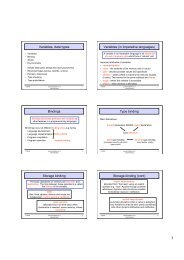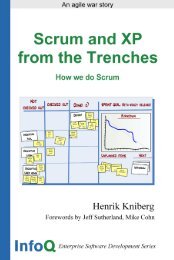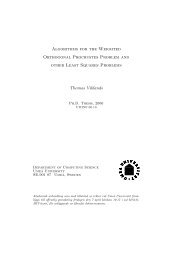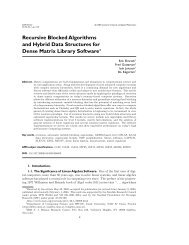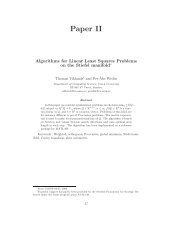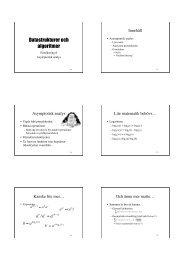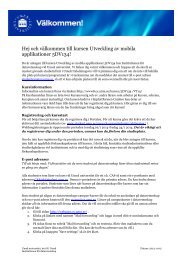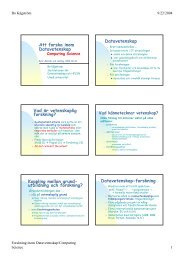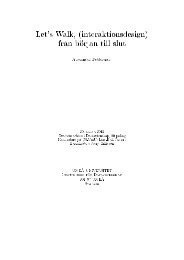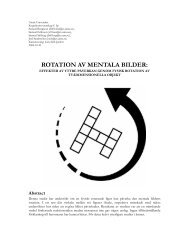Designing a persistent online strategy game - Department of ...
Designing a persistent online strategy game - Department of ...
Designing a persistent online strategy game - Department of ...
Create successful ePaper yourself
Turn your PDF publications into a flip-book with our unique Google optimized e-Paper software.
28 Chapter 4. Models & methods for evaluating <strong>game</strong>s<br />
<strong>of</strong> product usage and iterative design [3, page 7]. The process <strong>of</strong> incorporating usercentred<br />
design into product development is sometimes called usability engineering [3].<br />
The usability engineering lifecycle is shown in table 4.1 below [19, page 15]:<br />
Table 4.1: The usability engineering lifecycle model. Adapted from Faulkner [19].<br />
Task<br />
Know the user<br />
Know the task<br />
User requirements capture<br />
Setting usability goals<br />
Design process<br />
Apply guidelines heuristics<br />
Prototyping<br />
Evaluating with users<br />
Redesign and evaluate with users<br />
Evaluate with users and report<br />
Information produced<br />
User Characteristics, user background<br />
User’s current task, task analysis<br />
User requirements<br />
Usability specification<br />
Design<br />
Feedback for design<br />
Prototype for user testing<br />
Feedback for redesign<br />
Finished product<br />
Feedback on product for future systems<br />
A large and important part <strong>of</strong> the usability engineering lifecycle is the evaluation. The<br />
purpose <strong>of</strong> usability evaluation is to analyze how usable a chosen design <strong>of</strong> a product is.<br />
There are several usability evaluation techniques and they can be divided into usability<br />
inspection, testing and inquiry [21].<br />
Usability inspection is a group <strong>of</strong> methods where experts inspects, or examines the usability<br />
<strong>of</strong> a product. The most popular method is Heuristic evaluation [3, page 35].<br />
Heuristics for usability are properties and principles that positively affect usability.<br />
Heuristic evaluation is performed by an expert evaluator which spends some time alone<br />
with the system and tries to find occurrences where a particular principle is broken.<br />
There are several different heuristic principles available that an evaluator can use.<br />
Heuristic evaluation can be performed early in the development process, before a working<br />
prototype is implemented. This is because the evaluator only needs the specification<br />
<strong>of</strong> the design to be able to evaluate it.<br />
Usability testing provides direct information on how users are using a system and what<br />
problems they have. Testing for usability means to directly involve end users and observe<br />
where problems arise. The session is usually recorded for future analysis, so that the<br />
evaluator can see how the user is performing a task. But only recording does not answer<br />
why a user does specific actions, so they are <strong>of</strong>ten encouraged externalize their thoughts.<br />
This procedure is called the think out loud protocol. To think out loud is unnatural for<br />
most users and the evaluator may have to remind them throughout the evaluation [3,<br />
pages 235-238].<br />
Usability inquiry concerns learning the likes, dislikes and needs <strong>of</strong> the users. This can<br />
be achieved by field studies or more or less structured interviews. Another method that<br />
can be used early in the design process is focus groups.<br />
Satisfaction is one <strong>of</strong> the components <strong>of</strong> usability, but it is least understood. The<br />
methods for evaluating satisfaction tend to be quite crude and vague and only limited



